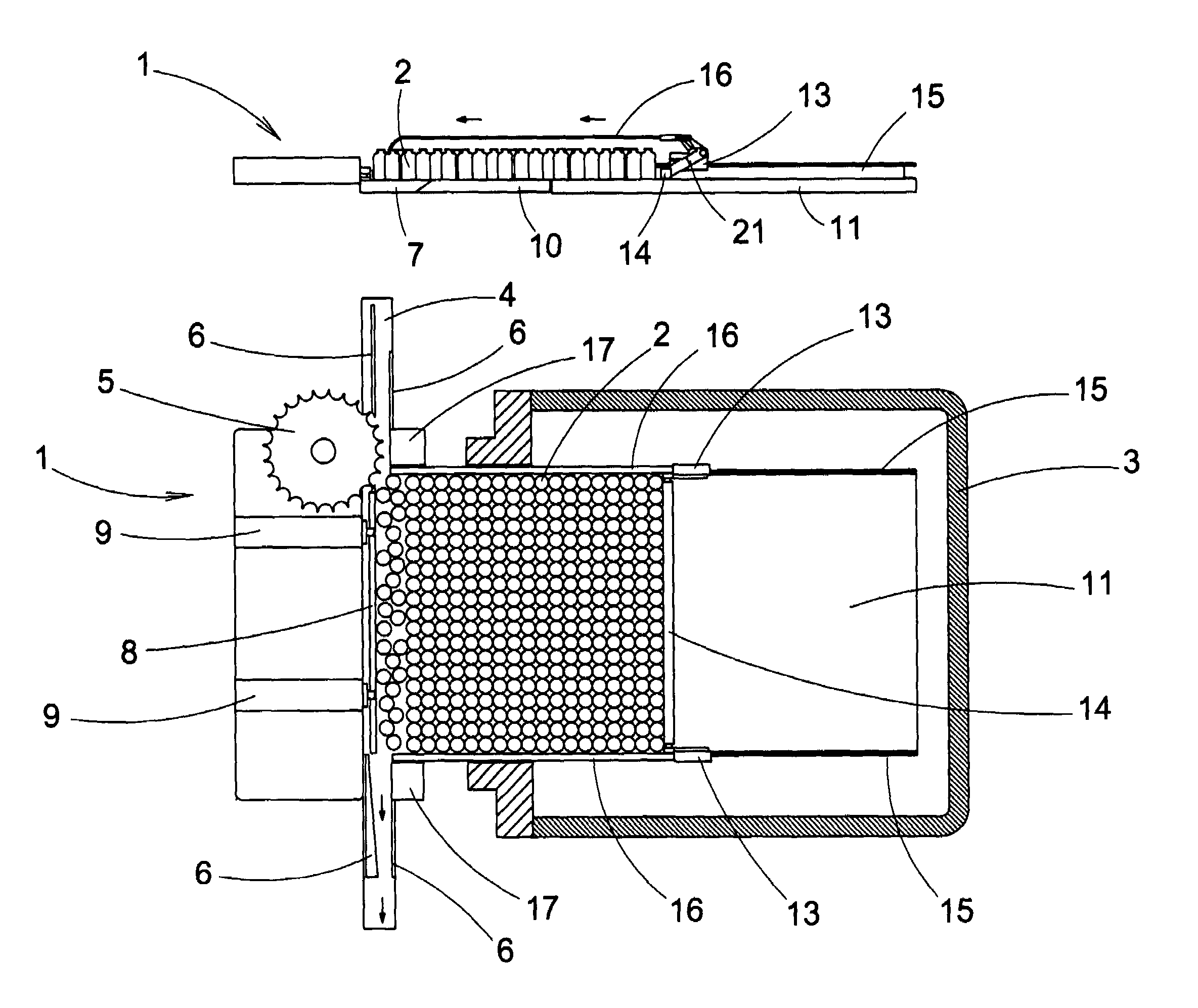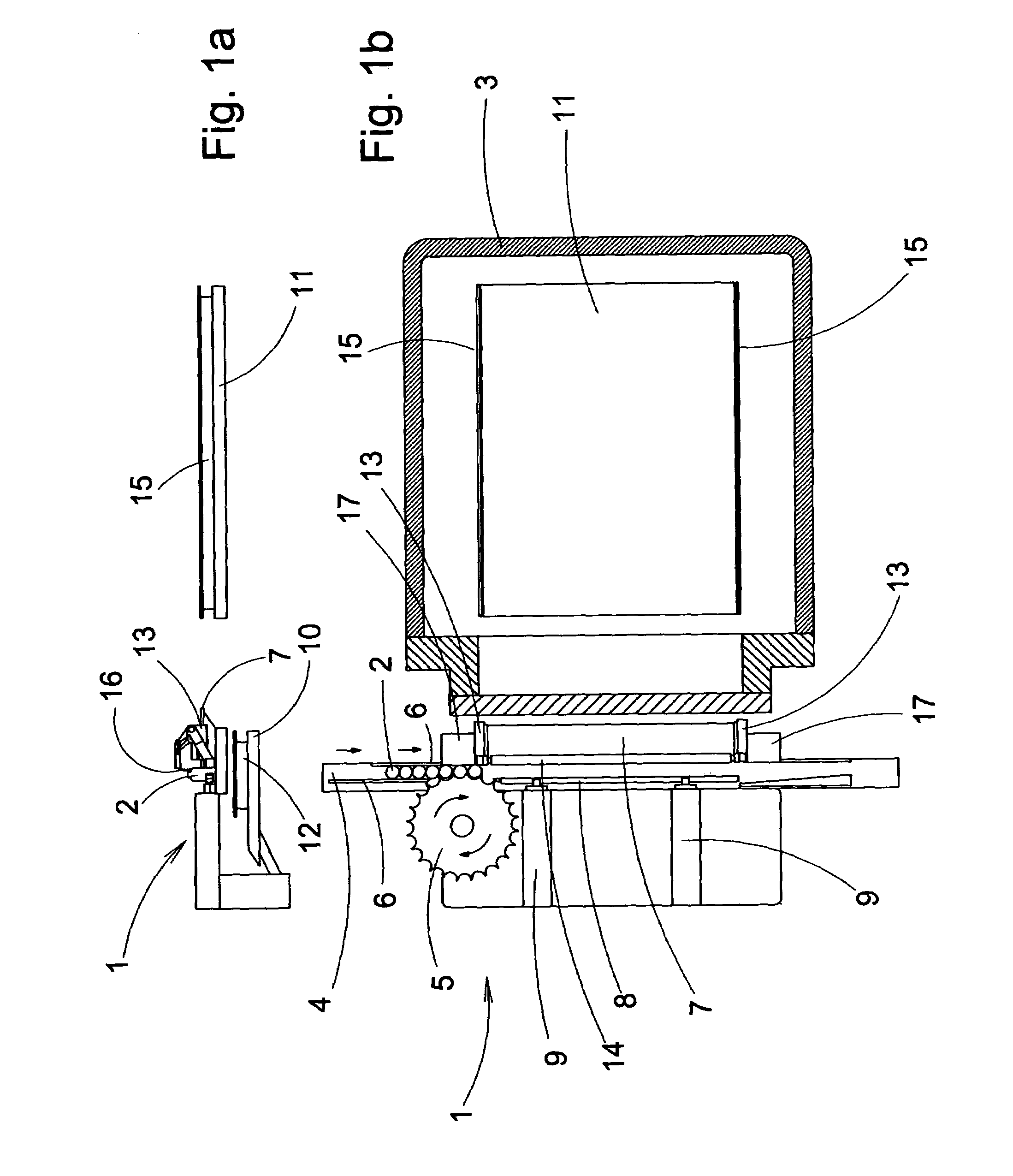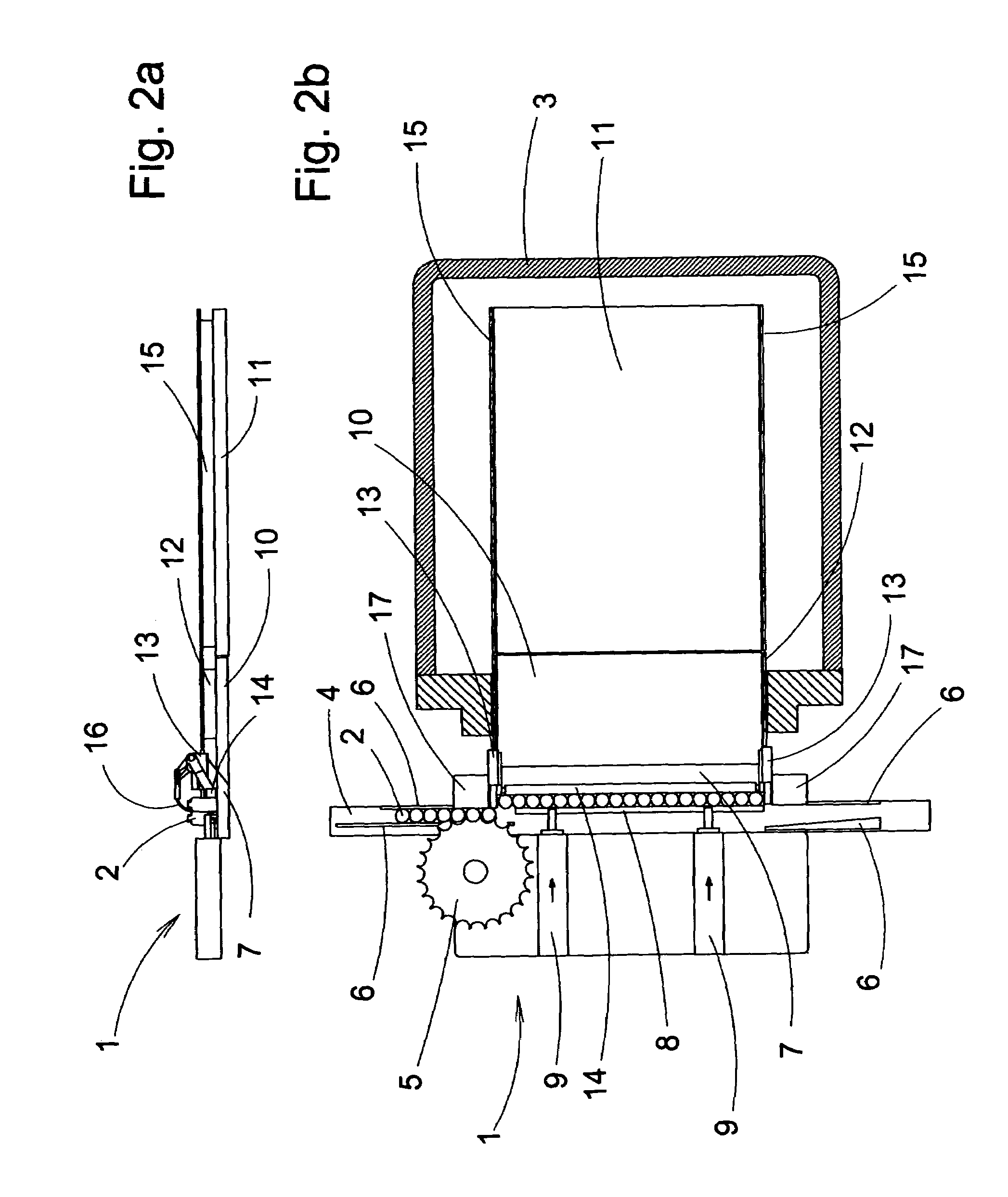Device for loading and unloading containers
a container and device technology, applied in the direction of drying machines, drying machines with progressive movements, drying solid materials, etc., can solve the problems of high maintenance cost of such rooms, access to freeze-dryers, and small spa
- Summary
- Abstract
- Description
- Claims
- Application Information
AI Technical Summary
Benefits of technology
Problems solved by technology
Method used
Image
Examples
Embodiment Construction
[0028]The objective of this invention is to resolve the disadvantages mentioned by developing a device for loading and unloading containers into and out of an enclosure of an installation for treating the substances contained in said containers, which has the advantages described below.
[0029]In accordance with this objective, the device of this invention includes a support structure, means for positioning said containers on the device, a fixed platform, first means for moving said containers during a loading process, second means for moving the containers during a unloading process and third means for moving said second means to a position higher than said containers and for moving outside the enclosure of the treatment installation said second means, said second means acting as a stop during loading and as a pusher during unloading, and is characterised in that said device includes an extendible platform, said extendible platform unfurling from said support structure to form, durin...
PUM
 Login to View More
Login to View More Abstract
Description
Claims
Application Information
 Login to View More
Login to View More - R&D
- Intellectual Property
- Life Sciences
- Materials
- Tech Scout
- Unparalleled Data Quality
- Higher Quality Content
- 60% Fewer Hallucinations
Browse by: Latest US Patents, China's latest patents, Technical Efficacy Thesaurus, Application Domain, Technology Topic, Popular Technical Reports.
© 2025 PatSnap. All rights reserved.Legal|Privacy policy|Modern Slavery Act Transparency Statement|Sitemap|About US| Contact US: help@patsnap.com



